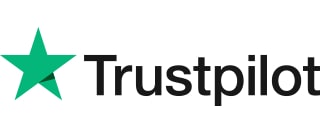A new study reveals good and bad news about the Free Application for Federal Student Aid. More parents than ever plan to take advantage of free college money for their kids. But the notoriously complicated form is still a mess for many.
Discover student loans polled 1,000 parents of college-bound students on how they plan to cover costs. Nearly 3 out of 5 who hadn’t planned on filling out FAFSA will this semester. Here’s the downside: Many are seeing the confusing forms for the first time.
The results parrot a Debt.com survey on the same topic. Four in ten Americans said they’ve “had trouble filling out a FAFSA form.” Mainly because they “didn’t know all the required financial information.”
But even the government is aware filing a FAFSA form is complicated.
Change in motion
Last year, Debt.com reported Congress passed what’s called the FAFSA Simplification Act. The goal is to reduce the application from 108 questions to only 36. That’s eliminating nearly two-thirds of questions.
Research has shown more than $2 billion in free money for college goes unused every year. Reducing questions will help families access those funds.
Debt.com chairman Howard Dvorkin, CPA, feels FAFSA should’ve never been so tough.
“Getting access to federal student loans shouldn’t be harder than filing your taxes,” he says. “I’m glad to see the Department of Education trying to make it easier – although it literally took an act of Congress.”
Like many things in government, the wheels of progress turn slowly. The Act has already been delayed by a year.
Find out: Parents Fear They Can’t Afford to Pay for College
Slow motion
Families aren’t looking into FAFSA for the first time because they want the confusion – they need whatever break they can get right now.
“Given the uncertainties in the economy right now around inflation and fears of a recession, it’s understandable some families are feeling the impact of paying for college and reconsidering applying for federal aid,” said Rich Finn, vice president of Discover Student Loans.
Finn’s sentiment matches Dvorkin’s. They’re both happy to see some progress being made. But what are families with college-bound children to do now? They’re still confused by the process.
Discover’s survey found, nearly half of parents (47%) “have never spoken about the FAFSA.” Even worse many don’t know that enrollment already opened on Oct. 1.
Finn has a suggestion for parents interested in FAFSA.
“It’s encouraging to see nearly three-quarters of parents planning to complete the FAFSA since it’s the first step families need to take to apply for financial aid,” he says. “Schools have different deadlines for completing the FAFSA, so families should check to ensure they are submitting it on time as many schools offer financial aid on a first-come, first-serve basis.”
It could just help them and their kids from taking out more expensive student loans. For those struggling with the form now, check out: How to Complete the FAFSA.
Find out: How Can I Save for College Without Affecting Financial Aid?









